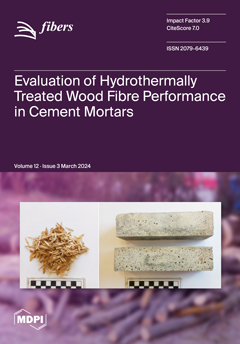The use of bacterial cellulose (BC), having high purity, a high degree of crystallinity, water-holding capacity, tensile strength and adaptability on a broad scale is limited because of the low yield. In this study, the optimal conditions for bio-cellulose production by
Komagataeibacter rhaeticus
[...] Read more.
The use of bacterial cellulose (BC), having high purity, a high degree of crystallinity, water-holding capacity, tensile strength and adaptability on a broad scale is limited because of the low yield. In this study, the optimal conditions for bio-cellulose production by
Komagataeibacter rhaeticus K23 were investigated. Optimal values for temperature, pH, inoculum concentration and incubation time were determined via Taguchi design. The maximum BC production, 9.1 ± 0.66 g·L
−1 (dry weight), was obtained from 32 °C, pH 5.5, 8 log CFU·mL
−1 and 14 days of incubation. The inoculum concentration was the most significant factor affecting BC yield. A value of 8 log CFU·mL
−1 and 14 days of incubation led to significantly higher levels of BC yield than other concentrations (8.5, 9, 9.5, 10 and 10.5 log CFU·mL
−1) (
p < 0.002) and days (15, 16, 17, 21 and 28) (
p < 0.001). The studied features, namely absorption peaks (Fourier transform infrared spectroscopy), pattern and the crystallinity index (X-ray diffraction analysis) of the BC obtained in this study were all in parallel with the characteristics of cellulose I. The study demonstrates that optimized parameters were effective in producing BC with high water-holding capacity, tensile strength, elongation and Young’s modulus (mechanical tests) by
K. rhaeticus K23.
Full article





